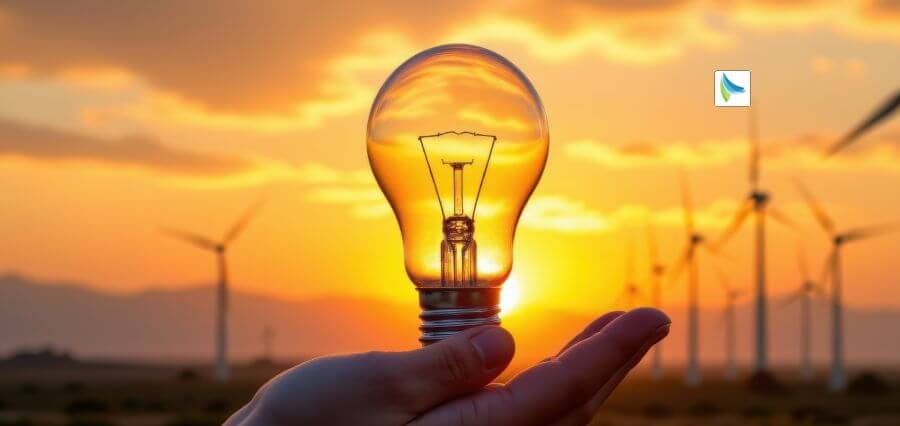The world of energy is in the midst of a seismic shift. As the planet transitions from fossil fuels to clean technologies, energy leaders must not only transform but rebirth leadership for a low-carbon world. It is not merely an economic or technological shift; it is a strategic and moral imperative. At the center of this transformation lies new leadership that will wed innovation and integrity, scale and sustainability, and power and purpose.
These next-generation clean energy visionaries are not just infrastructure stewards or utility providers—they are futurists. They must reconcile decarbonization, digitization, and democratization, and navigate regulatory pressure, geopolitics, and changing public sentiment.
It is a challenging mandate. But it is also a powerful chance to build a cleaner, more just, more resilient world.
Purpose-Driven Innovation
Successful clean energy leaders are aware that purpose isn’t a tagline—its a plan. Purpose informs investment decisions, defines technology deployment, and accelerates stakeholder trust. For the clean energy industry, purpose generally centers on three interlinked pillars: environmental footprint, energy equity, and economic prosperity.
This is where purpose meets innovation. From floating solar farms to battery storage, green hydrogen to AI-optimized grids, clean energy businesses are unleashing solutions that lower emissions but also common opportunity. These leaders are no longer simply pursuing megawatts—only megawatts with purpose.
By infusing purpose into the core of business models, clean energy pioneers are drawing top talent, building public trust, and standing out in an increasingly crowded field.
Crossroads Leadership: Addressing Compound Risks
Clean energy transformation is not a tech issue—it’s a system issue. Leaders need to manage compound risks: supply chain exposure, shifting policy environments, climate uncertainty, and workforce reskilling.
It takes a new spirit of leadership—one that is systems-oriented, digitally connected, and intensely collaborative. The clean energy industry needs leaders who can look over walls, collaborate across industries and governments, and mobilize coalitions that drive change.
Today’s leadership is, in almost every sense, less about ordering people around—it’s more about co-creating ecosystems. That involves engaging with local communities up front, gaining trust with regulators, and investing in partnerships that create shared value.
From Risk to Resilience
Clean energy leadership is about having a double mandate: leading change at pace and building resilience and reliability. The stakes are high. With increasingly interconnected grids bringing more variable renewables like wind and solar, stability, storage, and smart infrastructure come to the fore.
This is where leaders lead—not just in bringing innovation, but in leading transition with integrity. They are creating power systems that are not only clean, but affordable, secure, and fair. It takes foresight, awareness of risks, and long-term thinking.
All in all, clean energy leaders today are planet and performance stewards. They recognize that operating excellence must accompany climate ambition—and that change towards sustainability rests on trust at every level.
People at the Core of the Transition
Though technology and infrastructure are crucial, people make the clean energy revolution go. Whether educating technicians for emerging grid technologies or upskilling incumbent energy industry staff, leadership is about investing in human capital.
It applies to workers to communities where clean energy initiatives become based. Leaders must see to it that the value of the transition is distributed to all on an equitable basis. Equally important is distributing benefits to historically disinvested or fossil fuel-baseloaded communities.
This social-first strategy isn’t good enough—it’s necessary. A fair transition is a successful transition. By pushing for greater social inclusion in energy planning, leaders are granted more permission to act, cut resistance, and construct movements—not merely markets.
Transparency, Accountability, and Trust
In an era of more outspoken stakeholders, clean energy leadership needs to be transparent, evidence-driven, and accountable. Investors are requiring ESG disclosures. Consumers are probing for greenwashing. Governments are strengthening compliance requirements. And workers want to work for firms with a similar set of values.
This requires leaders to lead with integrity and authenticity. They need to talk not only of success, but of failures and what they have learned. They need to be loud and clear in declaring action, and reporting honestly on progress. And they must commit to sustainability promises being followed up with action—and not rhetoric.
Those who achieve it well do not merely comply—but build credibility. And in a profession where trust is as fundamental as technology, credibility is the most powerful competitive edge.
The Road Ahead: Leading with Courage and Conviction
The journey to a net-zero world isn’t linear. It’ll be messy, evolutionary, and full of difficult decisions. But full of unprecedented possibility for those who are willing to lead with courage and conviction.
They won’t be measured by how fast they grow—by how deeply they lead. By how they build sustainability into strategy, equity into action, and humaneness into innovation.
They will pose tough questions: Who gets left behind? What are the unforeseen consequences? How do we move faster—together?
And they will respond to them not in words, but in outcomes.
Conclusion: Power with Purpose
Leadership must change because the world stands at the threshold of an energy revolution. The era of clean energy demands more than optimism—it demands tangible, system-wide change driven by purpose.
Because at its essence, the transition to clean energy is not about watts and gigawatts. It’s about who we decide to be, what we care most about, and how we live—centuries down the line.
Read More: The Digital Powerhouse: How Tech is Transforming Energy Systems












